Yuchi Ma
Towards an Understanding of Context Utilization in Code Intelligence
Apr 11, 2025Abstract:Code intelligence is an emerging domain in software engineering, aiming to improve the effectiveness and efficiency of various code-related tasks. Recent research suggests that incorporating contextual information beyond the basic original task inputs (i.e., source code) can substantially enhance model performance. Such contextual signals may be obtained directly or indirectly from sources such as API documentation or intermediate representations like abstract syntax trees can significantly improve the effectiveness of code intelligence. Despite growing academic interest, there is a lack of systematic analysis of context in code intelligence. To address this gap, we conduct an extensive literature review of 146 relevant studies published between September 2007 and August 2024. Our investigation yields four main contributions. (1) A quantitative analysis of the research landscape, including publication trends, venues, and the explored domains; (2) A novel taxonomy of context types used in code intelligence; (3) A task-oriented analysis investigating context integration strategies across diverse code intelligence tasks; (4) A critical evaluation of evaluation methodologies for context-aware methods. Based on these findings, we identify fundamental challenges in context utilization in current code intelligence systems and propose a research roadmap that outlines key opportunities for future research.
In-depth Analysis of Graph-based RAG in a Unified Framework
Mar 06, 2025Abstract:Graph-based Retrieval-Augmented Generation (RAG) has proven effective in integrating external knowledge into large language models (LLMs), improving their factual accuracy, adaptability, interpretability, and trustworthiness. A number of graph-based RAG methods have been proposed in the literature. However, these methods have not been systematically and comprehensively compared under the same experimental settings. In this paper, we first summarize a unified framework to incorporate all graph-based RAG methods from a high-level perspective. We then extensively compare representative graph-based RAG methods over a range of questing-answering (QA) datasets -- from specific questions to abstract questions -- and examine the effectiveness of all methods, providing a thorough analysis of graph-based RAG approaches. As a byproduct of our experimental analysis, we are also able to identify new variants of the graph-based RAG methods over specific QA and abstract QA tasks respectively, by combining existing techniques, which outperform the state-of-the-art methods. Finally, based on these findings, we offer promising research opportunities. We believe that a deeper understanding of the behavior of existing methods can provide new valuable insights for future research.
RepoTransBench: A Real-World Benchmark for Repository-Level Code Translation
Dec 23, 2024



Abstract:Repository-level code translation refers to translating an entire code repository from one programming language to another while preserving the functionality of the source repository. Many benchmarks have been proposed to evaluate the performance of such code translators. However, previous benchmarks mostly provide fine-grained samples, focusing at either code snippet, function, or file-level code translation. Such benchmarks do not accurately reflect real-world demands, where entire repositories often need to be translated, involving longer code length and more complex functionalities. To address this gap, we propose a new benchmark, named RepoTransBench, which is a real-world repository-level code translation benchmark with an automatically executable test suite. We conduct experiments on RepoTransBench to evaluate the translation performance of 11 advanced LLMs. We find that the Success@1 score (test success in one attempt) of the best-performing LLM is only 7.33%. To further explore the potential of LLMs for repository-level code translation, we provide LLMs with error-related feedback to perform iterative debugging and observe an average 7.09% improvement on Success@1. However, even with this improvement, the Success@1 score of the best-performing LLM is only 21%, which may not meet the need for reliable automatic repository-level code translation. Finally, we conduct a detailed error analysis and highlight current LLMs' deficiencies in repository-level code translation, which could provide a reference for further improvements.
Agents in Software Engineering: Survey, Landscape, and Vision
Sep 13, 2024



Abstract:In recent years, Large Language Models (LLMs) have achieved remarkable success and have been widely used in various downstream tasks, especially in the tasks of the software engineering (SE) field. We find that many studies combining LLMs with SE have employed the concept of agents either explicitly or implicitly. However, there is a lack of an in-depth survey to sort out the development context of existing works, analyze how existing works combine the LLM-based agent technologies to optimize various tasks, and clarify the framework of LLM-based agents in SE. In this paper, we conduct the first survey of the studies on combining LLM-based agents with SE and present a framework of LLM-based agents in SE which includes three key modules: perception, memory, and action. We also summarize the current challenges in combining the two fields and propose future opportunities in response to existing challenges. We maintain a GitHub repository of the related papers at: https://github.com/DeepSoftwareAnalytics/Awesome-Agent4SE.
CodeR: Issue Resolving with Multi-Agent and Task Graphs
Jun 03, 2024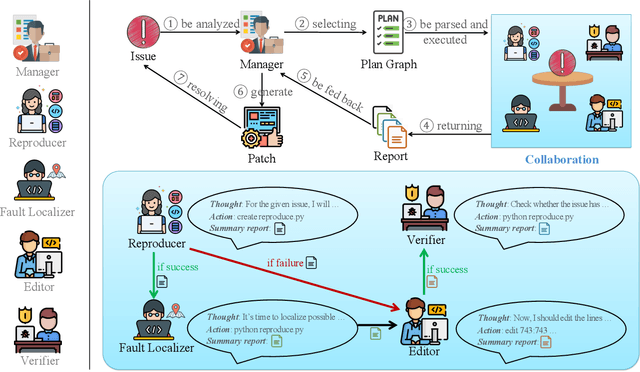
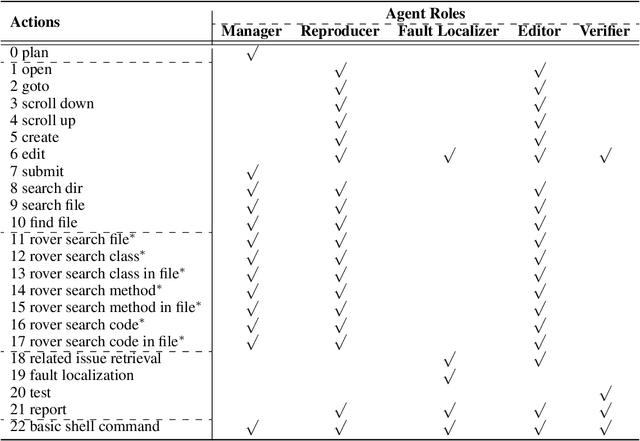

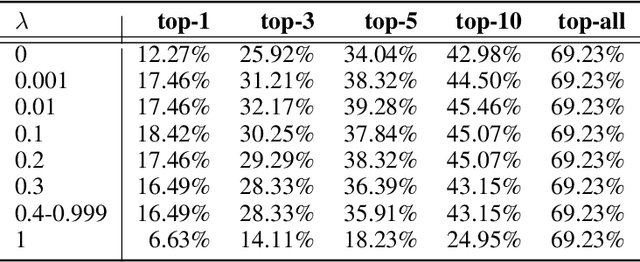
Abstract:GitHub issue resolving recently has attracted significant attention from academia and industry. SWE-bench is proposed to measure the performance in resolving issues. In this paper, we propose CodeR, which adopts a multi-agent framework and pre-defined task graphs to Repair & Resolve reported bugs and add new features within code Repository. On SWE-bench lite, CodeR is able to solve 28.00% of issues, in the case of submitting only once for each issue. We examine the performance impact of each design of CodeR and offer insights to advance this research direction.
Learning county from pixels: Corn yield prediction with attention-weighted multiple instance learning
Dec 02, 2023Abstract:Remote sensing technology has become a promising tool in yield prediction. Most prior work employs satellite imagery for county-level corn yield prediction by spatially aggregating all pixels within a county into a single value, potentially overlooking the detailed information and valuable insights offered by more granular data. To this end, this research examines each county at the pixel level and applies multiple instance learning to leverage detailed information within a county. In addition, our method addresses the "mixed pixel" issue caused by the inconsistent resolution between feature datasets and crop mask, which may introduce noise into the model and therefore hinder accurate yield prediction. Specifically, the attention mechanism is employed to automatically assign weights to different pixels, which can mitigate the influence of mixed pixels. The experimental results show that the developed model outperforms four other machine learning models over the past five years in the U.S. corn belt and demonstrates its best performance in 2022, achieving a coefficient of determination (R2) value of 0.84 and a root mean square error (RMSE) of 0.83. This paper demonstrates the advantages of our approach from both spatial and temporal perspectives. Furthermore, through an in-depth study of the relationship between mixed pixels and attention, it is verified that our approach can capture critical feature information while filtering out noise from mixed pixels.
SSIF: Learning Continuous Image Representation for Spatial-Spectral Super-Resolution
Sep 30, 2023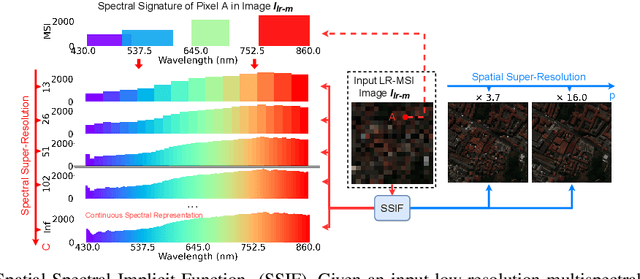
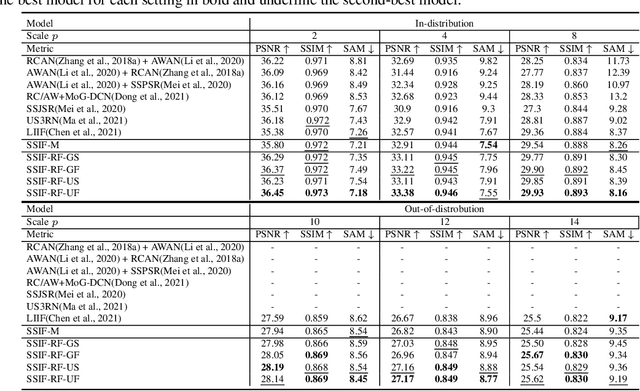

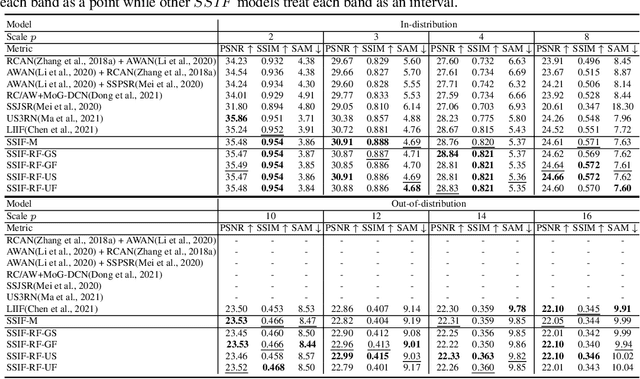
Abstract:Existing digital sensors capture images at fixed spatial and spectral resolutions (e.g., RGB, multispectral, and hyperspectral images), and each combination requires bespoke machine learning models. Neural Implicit Functions partially overcome the spatial resolution challenge by representing an image in a resolution-independent way. However, they still operate at fixed, pre-defined spectral resolutions. To address this challenge, we propose Spatial-Spectral Implicit Function (SSIF), a neural implicit model that represents an image as a function of both continuous pixel coordinates in the spatial domain and continuous wavelengths in the spectral domain. We empirically demonstrate the effectiveness of SSIF on two challenging spatio-spectral super-resolution benchmarks. We observe that SSIF consistently outperforms state-of-the-art baselines even when the baselines are allowed to train separate models at each spectral resolution. We show that SSIF generalizes well to both unseen spatial resolutions and spectral resolutions. Moreover, SSIF can generate high-resolution images that improve the performance of downstream tasks (e.g., land use classification) by 1.7%-7%.
Corn Yield Prediction based on Remotely Sensed Variables Using Variational Autoencoder and Multiple Instance Regression
Nov 23, 2022



Abstract:In the U.S., corn is the most produced crop and has been an essential part of the American diet. To meet the demand for supply chain management and regional food security, accurate and timely large-scale corn yield prediction is attracting more attention in precision agriculture. Recently, remote sensing technology and machine learning methods have been widely explored for crop yield prediction. Currently, most county-level yield prediction models use county-level mean variables for prediction, ignoring much detailed information. Moreover, inconsistent spatial resolution between crop area and satellite sensors results in mixed pixels, which may decrease the prediction accuracy. Only a few works have addressed the mixed pixels problem in large-scale crop yield prediction. To address the information loss and mixed pixels problem, we developed a variational autoencoder (VAE) based multiple instance regression (MIR) model for large-scaled corn yield prediction. We use all unlabeled data to train a VAE and the well-trained VAE for anomaly detection. As a preprocess method, anomaly detection can help MIR find a better representation of every bag than traditional MIR methods, thus better performing in large-scale corn yield prediction. Our experiments showed that variational autoencoder based multiple instance regression (VAEMIR) outperformed all baseline methods in large-scale corn yield prediction. Though a suitable meta parameter is required, VAEMIR shows excellent potential in feature learning and extraction for large-scale corn yield prediction.
PanGu-Coder: Program Synthesis with Function-Level Language Modeling
Jul 22, 2022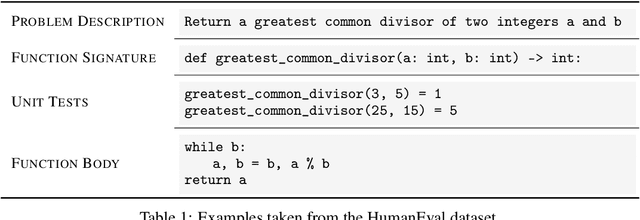
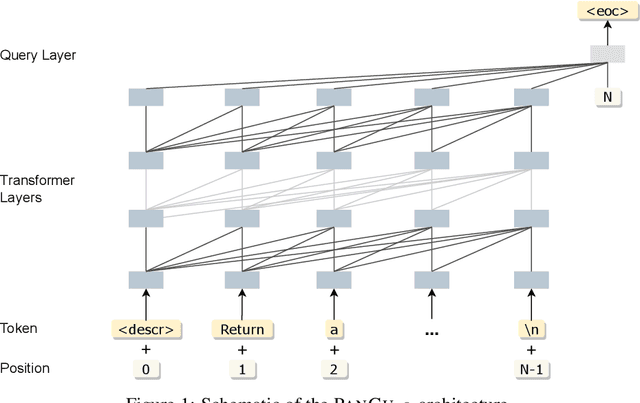

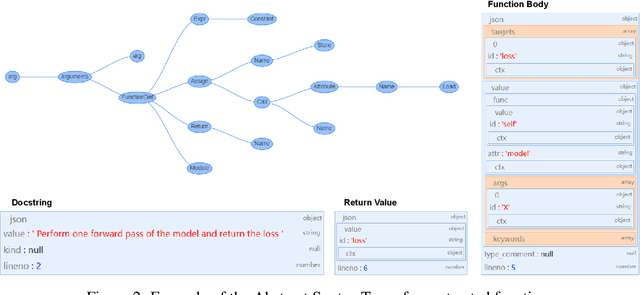
Abstract:We present PanGu-Coder, a pretrained decoder-only language model adopting the PanGu-Alpha architecture for text-to-code generation, i.e. the synthesis of programming language solutions given a natural language problem description. We train PanGu-Coder using a two-stage strategy: the first stage employs Causal Language Modelling (CLM) to pre-train on raw programming language data, while the second stage uses a combination of Causal Language Modelling and Masked Language Modelling (MLM) training objectives that focus on the downstream task of text-to-code generation and train on loosely curated pairs of natural language program definitions and code functions. Finally, we discuss PanGu-Coder-FT, which is fine-tuned on a combination of competitive programming problems and code with continuous integration tests. We evaluate PanGu-Coder with a focus on whether it generates functionally correct programs and demonstrate that it achieves equivalent or better performance than similarly sized models, such as CodeX, while attending a smaller context window and training on less data.
 Add to Chrome
Add to Chrome Add to Firefox
Add to Firefox Add to Edge
Add to Edge